Offshore spending to remain robust in 2024
27 February 2024

This report also includes: Aramco continues its hunt for hydrocarbons
Spending on offshore oil and gas projects in the Middle East and North Africa (Mena) region reached a 10-year high in 2023. Regional hydrocarbons producers collectively awarded $17.5bn-worth of contracts, also making last year one of the best on record for capital expenditure (capex) on offshore oil and gas projects.
The robust spending was facilitated by a steady oil price environment, with Brent crude averaging about $82 a barrel, and by Mena state enterprises’ pursuit of strategic oil and gas production potential goals set by their respective governments.
The UAE’s Abu Dhabi National Oil Company (Adnoc) emerged as the biggest spender on offshore projects in the region last year. It awarded an estimated $17bn-worth of contracts for engineering, procurement and construction (EPC) works on its Hail and Ghasha sour gas development project.
The $8.2bn contract that Adnoc awarded to a consortium of Abu Dhabi’s NMDC Energy and Italian contractor Saipem for offshore EPC works on the Hail and Ghasha project is the single-largest offshore contract to have ever been awarded in the UAE. The package includes EPC work on offshore facilities including those on artificial islands, as well as subsea pipelines.
Aramco offshore capex
Saudi Aramco was the second-highest regional offshore spender. In 2023, the company awarded $5.5bn-worth of offshore engineering, procurement, construction and installation (EPCI) contracts to entities in its Long-Term Agreement (LTA) pool of offshore contractors.
A consortium of Indian contractor Larsen & Toubro Energy Hydrocarbon (LTEH) and UK-based Subsea7 won seven offshore EPCI contracts from Aramco estimated to be worth nearly $2bn.
LTEH/Subsea7 won tender numbers 98, 120 and 121 in Aramco’s Contracts Release & Purchase Order (CRPO) system, which cover EPCI work on Saudi Arabia’s Zuluf, Hasbah and Manifa offshore oil and gas fields. The combined value of the three CRPOs, which were awarded in March 2023, is estimated to be $1bn.
In April, LTEH/Subsea7 won CRPOs 117, 118 and 119, which cover EPCI work on Saudi Arabia’s Marjan offshore oil and gas field development. The three tenders are estimated to be worth over $900m.
The LTEH/Subsea7 consortium is also understood to have secured the contract for CRPO 97, which relates to EPCI work on several units at the Abu Safah field.
Italian contractor Saipem confirmed in early April that it had won CRPO 96, estimated to have a value of $120m. The scope of work on the tender covers the EPCI of one platform topside and the associated subsea flexible, umbilical and cable systems at the Abu Safah and Safaniya fields.
Also in April, China Offshore Oil Engineering Company won CRPO 122, estimated to be worth $255m, covering the installation of 13 jackets at the Safaniya field.
Saipem also won CRPO 124, a contract that is part of the third gas development phase of the Marjan hydrocarbons field.
Lamprell announced that it had also won a pair of offshore contracts – CRPOs 125 and 126 – with a combined estimated value of more than $400m.
Meanwhile, NMDC Energy confirmed it had been awarded CRPOs 136 and 137 by Aramco, which are worth a total of $1.3bn, and Lamprell won CRPO 135 at an estimated $390m. These three tenders cover the EPCI work on several structures at the Zuluf offshore oil and gas field development.
In December, Lamprell won CRPO 141, an estimated $20m-$25m contract for EPCI work on one jacket at the Zuluf field.
More spending ahead
Mena oil and gas producers are expected to maintain a high level of spending on offshore projects in 2024, with Aramco likely to lead the pack.
Most of Saudi Arabia’s oil and gas production comes from its offshore fields, such as Abu Safah, Arabiyah, Berri, Hasbah, Karan, Manifa, Marjan, Ribyan, Safaniya and Zuluf.
Aramco aims to maintain and gradually increase production from these fields, some of which are mature. In order to do this, the company must continue to invest in upgrading and modifying existing infrastructure at these fields and installing new structures.
Aramco is evaluating bids that it received in September for 10 offshore tenders – CRPOs 104 to 113 – which entail EPCI work on several structures at the Safaniya field, which is believed to be the world’s largest oil field. These contracts are estimated to be worth billions of dollars.
Moreover, Aramco has also received bids for two large CRPO tenders – numbers 134 and 127 – that are estimated to be worth a combined $3.8bn.
LTA contractors are also due to submit bids for a dozen new tenders in February. Aramco is expected to award contracts for most of these CRPOs in Q1, kicking off another year of significant spending on offshore oil and gas projects.
Separately, in the 5,770 square-kilometre Saudi-Kuwait Neutral Zone, the joint venture of Saudi Aramco and Kuwait Petroleum Corporation (KPC) is making progress with its plans to develop gas from the disputed Dorra offshore field.
Aramco and KPC selected France’s Technip Energies to carry out pre-front-end engineering and design (pre-feed) and feed work on the project to develop the field.
The two sides expect to produce about 1 billion cubic feet a day of gas from the Dorra field and have agreed to split the output equally. If Saudi Arabia and Kuwait are able to resolve their differences with Iran over the development of the asset, Aramco and KPC could award an estimated $5bn-worth of EPC contracts for the Dorra gas field development by the end of this year.
Further regional spending
Adnoc is also in line to award EPC contracts for several major offshore schemes this year, including its project to boost output from Abu Dhabi’s Upper Zakum offshore field. The project aims to raise the production potential of Abu Dhabi’s largest offshore field – the world’s second-largest – to 1.2 million barrels a day (b/d).
Adnoc is also expected to award EPC contracts for two projects to increase the crude output capacity of its Lower Zakum field.
In Qatar, state enterprise QatarEnergy is due to award contracts this year for the remaining packages of the second phase of its North Field Production Sustainability (NFPS) project.
The tender for the third NFPS phase two package was released by QatarEnergy LNG last year. The work on that package – known as EPCI 3 – is estimated to be valued at about $500m and covers EPCI work on offshore riser platforms, wellhead platforms and intra-field pipelines.
QatarEnergy LNG also issued the tender to contractors last year for the EPCI 4 package, estimated to be worth up to $4bn. The scope of work on this package covers two gas compression complexes that will weigh 25,000-35,000 tonnes, contributing to a total of 100,000 tonnes of fabrication.
 Aramco continues its hunt for hydrocarbons
Aramco continues its hunt for hydrocarbons
Exclusive from Meed
-
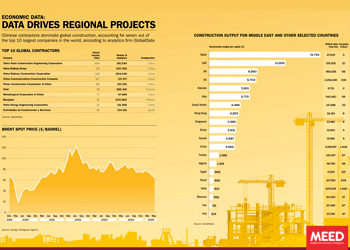 June 2025: Data drives regional projects
June 2025: Data drives regional projects30 June 2025
-
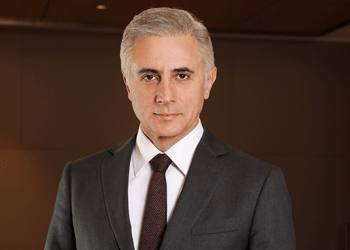 UAE-Turkiye financial links strengthen
UAE-Turkiye financial links strengthen30 June 2025
-

-
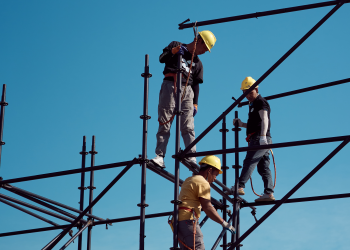 Iraq approves Basra housing project
Iraq approves Basra housing project30 June 2025
-
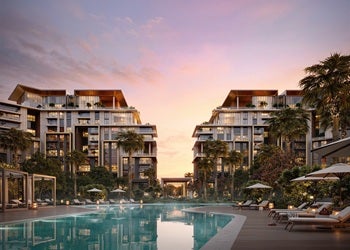 Meraas announces Dubai City Walk expansion
Meraas announces Dubai City Walk expansion30 June 2025
All of this is only 1% of what MEED.com has to offer
Subscribe now and unlock all the 153,671 articles on MEED.com
- All the latest news, data, and market intelligence across MENA at your fingerprints
- First-hand updates and inside information on projects, clients and competitors that matter to you
- 20 years' archive of information, data, and news for you to access at your convenience
- Strategize to succeed and minimise risks with timely analysis of current and future market trends
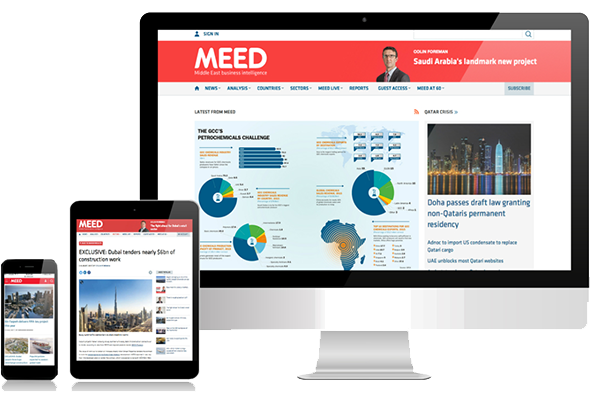
Related Articles
-
 June 2025: Data drives regional projects
June 2025: Data drives regional projects30 June 2025
Click here to download the PDF
Includes: Top 10 Global Contractors | Brent Spot Price | Construction output
To see previous issues of MEED Business Review, please click herehttps://image.digitalinsightresearch.in/uploads/NewsArticle/14171168/main.gif -
 UAE-Turkiye financial links strengthen
UAE-Turkiye financial links strengthen30 June 2025
 This package on UAE-Turkiye relations also includes:
This package on UAE-Turkiye relations also includes:> UAE-Turkiye trade gains momentum
> Turkiye’s Kalyon goes global

Turkish bank DenizBank is one of Turkiye’s leading private banks and, as a wholly owned subsidiary of Emirates NBD since 2019, it is playing a leading role in developing business links between the UAE and Turkiye.
Recep Bastug, who was appointed as DenizBank’s CEO in 2024, says there is great potential for trade between the two countries.
“Turkiye is a growing country,” he says. “We’ve had volatility over the past five years, but the Turkiye economy and the banking sector have been able to manage those periods successfully.”
Having spent years with international institutions such as BBVA, Bastug has vast experience in the banking sector. “Turkish banks, especially private ones like DenizBank, are very successful. In terms of capital, balance sheet structure and digital transformation, we are in a strong position,” he says.
 Solid fundamentals
Solid fundamentalsTurkiye’s fundamentals remain solid with a diversified export-oriented economy, a young and skilled population of 85 million, and relatively low debt levels. “We are not a highly leveraged country. Our household debt-to-GDP ratio is low. With the right policy mix, we offer high potential for foreign investors,” says Bastug.
That potential is increasingly being realised through growing engagement with the GCC and the UAE. “Turkiye’s connection with the Gulf is going up, and DenizBank is set to play a serious role in these relations. Day by day, Turkish companies are expanding their footprint in the region.”
GCC projects
Baştug says that many of these companies approach DenizBank to help facilitate their entry into Gulf markets. “Some of our clients are extremely well capitalised, but others need support for major projects. Just recently, one Turkish company announced a $3bn project in the region. We’re helping them connect with Emirates NBD and navigate the local financial landscape.”
DenizBank is actively supporting the creation of trilateral partnerships – particularly between Turkiye, the UAE and Saudi Arabia. “We see huge opportunity in forming financial strongholds across these markets, leveraging Turkiye’s contractor experience, the UAE’s capital and Saudi Arabia’s scale,” says Baştug.
DenizBank is already delivering results. “With Emirates NBD, we’ve identified 10 strategic cooperation areas, including trade finance, payments and capital markets. Thanks to this partnership, Emirates NBD has become the number one debt capital markets bank in Turkiye, even ahead of global players.”
One area of growing activity is initial public offering (IPO) participation. “We’ve launched a mutual fund that allows Turkish private banking clients to participate in IPOs from the region, including from the UAE and Saudi Arabia. It’s a diversification strategy and helps retain wealth within the group.”
Turkiye’s connection with the Gulf is going up, and DenizBank is set to play a serious role in these relations. Day by day, Turkish companies are expanding their footprint in the region
Recep Bastug, DenizBankInflation ends
Despite the current inflationary environment, Bastug says there is a clear inflection point ahead. “We expect 2027 to be a turning point. Once we exit the inflationary accounting regime [in Turkiye], DenizBank will become one of the biggest contributors to Emirates NBD’s global balance sheet. Last year, we contributed $1.2bn. In 2027, it will be significantly more.”
DenizBank is the fifth-largest private bank in Turkiye with about a 5% market share. “The largest private bank is at 13%. It’s not easy to close that gap – but we will do it. Our long-term goal, aligned with our shareholder, is to become the biggest and most successful private bank in the country.”
The bank is especially focused on agriculture, SMEs, and export financing – sectors that are deeply relevant to
Turkiye’s economic growth and to regional demand. “We are the leading agricultural bank in Turkiye, and we believe strongly in the sector’s future – both for local consumption and exports.”Regional opportunities
Bastug also sees potential for engagement beyond the GCC, including in post-conflict reconstruction. “In the past, Turkiye had strong trade volumes with Syria. Even during wartime, commercial links remained. Once a stable environment emerges, there will be opportunities – especially in infrastructure.”
While a physical branch presence is not currently being considered, DenizBank is prepared to support Turkish contractors operating in neighbouring countries. “We have the relationships and expertise to facilitate this growth. And culturally, we’re well aligned with the region – it helps make business smoother.”
As Turkiye re-establishes economic momentum and Gulf economies look to deliver on long-term visions, DenizBank is positioning itself for a more active role in the region in the future. “We are preparing the bank for the next stage, and with the backing of Emirates NBD, we’re confident in our ability to lead.”
READ MORE
> UAE-Turkiye trade gains momentum
> Turkiye’s Kalyon goes globalhttps://image.digitalinsightresearch.in/uploads/NewsArticle/14170372/main.gif -
 Multiply agrees to sell Pal Cooling to Tabreed and CVC
Multiply agrees to sell Pal Cooling to Tabreed and CVC30 June 2025
Abu Dhabi-based investment company Multiply Group has agreed to sell all of its shares in its district cooling subsidiary Pal Cooling Holding (PCH) for AED3.8bn ($1bn) to a consortium comprising Engie-backed National Central Cooling Company (Tabreed) and CVC DIF.
The transaction is still subject to regulatory approvals.
MEED exclusively reported in May that a team comprising Tabreed and CVC was holding exclusive discussions to acquire PCH.
Multiply Group initially acquired a 100% stake in PCH and its subsidiaries in July 2021.
Multiply Group has been advised by Standard Chartered and Clifford Chance. Tabreed and CVC DIF have been advised by Citi, Synergy Consulting and White & Case.
The transaction brings together two of the UAE’s leading district cooling players. PCH was founded in 2006 and operates five active district cooling plants across the UAE. The company maintains eight long-term concessions and strategic partnerships with some of the UAE’s leading real estate developers, servicing key residential, commercial and mixed-use developments – most notably on Abu Dhabi’s Reem Island.
Tabreed owns and operates 92 plants, including 76 in the UAE, five in Saudi Arabia, eight in Oman, one in Bahrain, one in India and one in Egypt, in addition to other international projects and operations.
https://image.digitalinsightresearch.in/uploads/NewsArticle/14170511/main.jpg -
 Iraq approves Basra housing project
Iraq approves Basra housing project30 June 2025
Iraq has approved plans to build a housing project in Basra that will offer about 5,000 homes in the first phase to tackle the country’s rising housing shortage.
The project, which is endorsed by Iraq’s National Investment Commission (NIC), will cover an area of about 3 square kilometres.
According to local media reports, Basra province governor Asaad Al-Idani said the project has already been awarded to a developer.
Iraq has been gradually recovering since the war. The government initially prioritised infrastructure and public housing to stimulate economic growth, improve living standards and attract foreign investment.
More recently, benefitting from higher oil prices and a period of relatively stable governance, Baghdad has expanded its focus to reconstructing and modernising the country’s deteriorating infrastructure.
The Iraqi construction market has also seen significant investments from private real estate developers from the region. In May, Egyptian real estate developer Ora Developers announced that it had started construction on the Al-Wardi residential city project, which consists of more than 100,000 residential units covering about 61 million square metres (sq m) on the southeastern side of Baghdad.
The move is the latest sign of international investors’ growing appetite for developing real estate in Iraq as part of the country’s post-war building initiatives.
Also in May, another Egyptian firm, Talaat Moustafa Group Holding, said it was in negotiations with the NIC to develop a mixed-use project. The project, which will cover an area of about 14 million sq m and will be located in the southwest of Baghdad, is expected to contain about 45,000 residential units.
The positive sentiment has been particularly buoyed by a robust 2024 budget, which allocated nearly $42bn to transport, social infrastructure and housing initiatives.
Looking ahead, Iraq’s construction industry is expected to register an annual average growth rate of 4.9% in 2025-28, supported by further investments in energy, infrastructure and housing projects, according to UK analytics firm GlobalData.
MEED’s June 2025 report on Iraq includes:
> COMMENT: Iraq maintains its pace, for now
> GOVERNMENT & ECONOMY: Iraq’s economy faces brewing storm
> OIL & GAS: Iraqi energy project value hits decade-high level
> PIPELINES: Revival of Syrian oil export route could benefit Iraq
> POWER: Iraq power sector turns a page
> CONSTRUCTION: Iraq pours billions into housing and infrastructure projects
> DATABANK: Iraq forecast dips on lower oil priceshttps://image.digitalinsightresearch.in/uploads/NewsArticle/14170011/main.png -
 Meraas announces Dubai City Walk expansion
Meraas announces Dubai City Walk expansion30 June 2025
Register for MEED’s 14-day trial access
Local real estate developer Meraas has announced the City Walk Crestlane project as it continues to expand its City Walk residential community in the Al-Wasl area of Dubai.
The City Walk Crestlane comprises two residential towers offering 198 one-, two-, three-, four- and five-bedroom units.
The project is expected to be completed and handed over by the third quarter of 2028.
Earlier this month, Meraas, which is part of Dubai Holding Real Estate, awarded a construction contract for another project at City Walk.
The local firm Naresco Contracting was awarded a AED450m ($123m) contract for the main construction works on its Central Park Plaza residential project at City Walk.
The project involves constructing two towers with 23 and 20 floors. Together, they will have 212 residential units.
In May, Meraas awarded another local firm, Al-Sahel Contracting Company, a AED300m contract for the main construction works on Elara, which is phase seven of the Madinat Jumeirah Living masterplan in Dubai.
The project involves building three residential towers with 234 apartments.
https://image.digitalinsightresearch.in/uploads/NewsArticle/14169472/main.jpg

